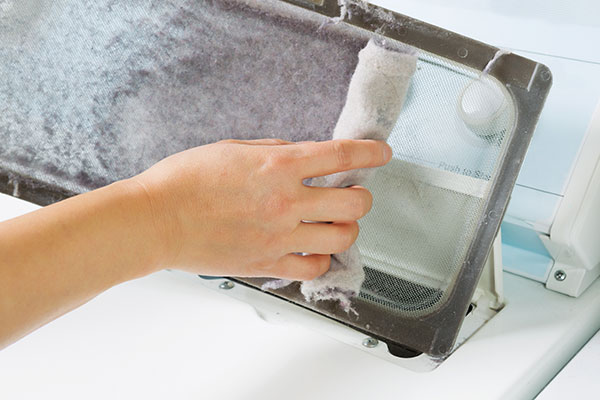
Over 15,000 dryer exhaust fires occur every year, prompting The Consumer Product Safety Commission (CPSC) to issue an alert.
Besides preventing injuries, or even deaths, cleaning dryer vents regularly will extend the life of your dryer and save money on energy costs.
In many new homes, dryer exhaust has to travel long distances to the outside vent. In many cases, installers seal ducts with duct tape, which tends to come loose after prolonged exposure to heat and moisture. If the vents aren’t properly installed and sealed, your family may be exposed to carbon monoxide and home fires. Properly cleaned dryer vents can save time, money, and eliminate mold problems. If you notice that your clothes aren’t drying as fast, have excessive lint, come out extremely hot or smell moldy, call us ASAP.
Our process:
- We start by pulling out our customers dryer away from the wall.
- With our rotary cleaning system, we ensure that the venting is free of flammable lint and debris that could allow the dryer vent run to become plugged.
- The termination of the run is cleaned and reconnected properly.
- We ensure that the lint trap is free of debris as well.

Tips for a safer dryer:
- Clean the lint screen/filter before or after drying each load of clothes. If clothing is still damp at the end of a typical drying cycle or drying requires longer times than normal, this may be a sign that the lint screen or the exhaust duct is blocked.
- Clean the dryer vent and exhaust duct periodically. Check the outside dryer vent while the dryer is operating to make sure exhaust air is escaping. If it is not, the vent or the exhaust duct may be blocked. To remove a blockage in the exhaust path, it may be necessary to disconnect the exhaust duct from the dryer. Remember to reconnect the ducting to the dryer and outside vent before using the dryer again.
- Replace plastic or foil, accordion-type ducting material with rigid or corrugated semi-rigid metal duct. Most manufacturers specify the use of a rigid or corrugated semi-rigid metal duct, which provides maximum airflow. The flexible plastic or foil type duct can more easily trap lint and is more susceptible to kinks or crushing, which can greatly reduce the airflow.
- Take special care when drying clothes that have been soiled with volatile chemicals such as gasoline, cooking oils, cleaning agents, or finishing oils and stains. If possible, wash the clothing more than once to minimize the amount of volatile chemicals on the clothes and, preferably, hang the clothes to dry. If using a dryer, use the lowest heat setting and a drying cycle that has a cool-down period at the end of the cycle. To prevent clothes from igniting after drying, do not leave the dried clothes in the dryer or piled in a laundry basket.

Michigan State Mechanical License # 71-06504 ◊ Residential Builders License #2102216207




